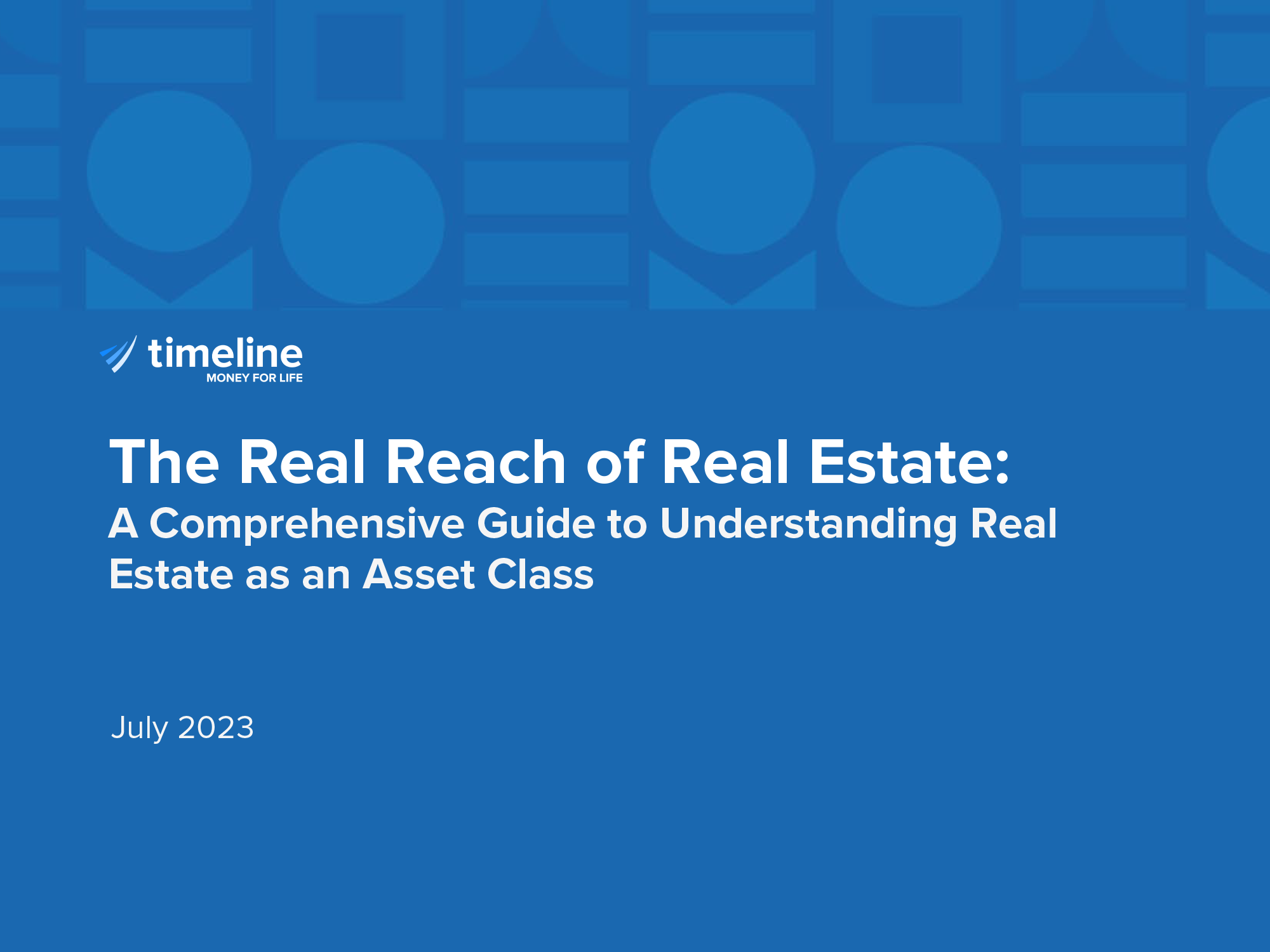Real estate remains one of the world’s largest asset classes, valued at over $326 trillion globally. For UK financial advisers, understanding how property fits within a diversified portfolio is essential — especially when clients may already hold significant direct property assets.
Download Your
Copy
Property Exposure Goes Beyond Bricks and Mortar
Direct property ownership, real estate companies, physical property funds, and Real Estate Investment Trusts (REITs) are the main routes to property exposure. While REITs offer income, liquidity, and diversification, they also carry equity market risks and sensitivity to interest rate changes.
REITs vs Equities
Timeline’s research shows REITs typically track global equities closely, with differences largely shaped by style and sector exposure. Factors such as small-cap and value tilt, and profitability characteristics influence their performance, while events like the pandemic often explain deviations.
Diversification — Not Always Clear-Cut
While REITs can offer diversification, their correlation with equities fluctuates over time. Importantly, many non-property firms — from retailers to tech companies — also hold significant real estate assets, meaning investors may already have indirect real estate exposure across their equity holdings.
A Holistic Planning Perspective
Many UK clients already hold multiple properties. Adding more dedicated real estate exposure could over-concentrate their portfolio. For most, diversified global portfolios often provide sufficient indirect exposure without the liquidity challenges of direct property investments.
Bottom line: Real estate has a role in portfolios — but it must be viewed within the context of each client’s overall wealth picture.
Download



